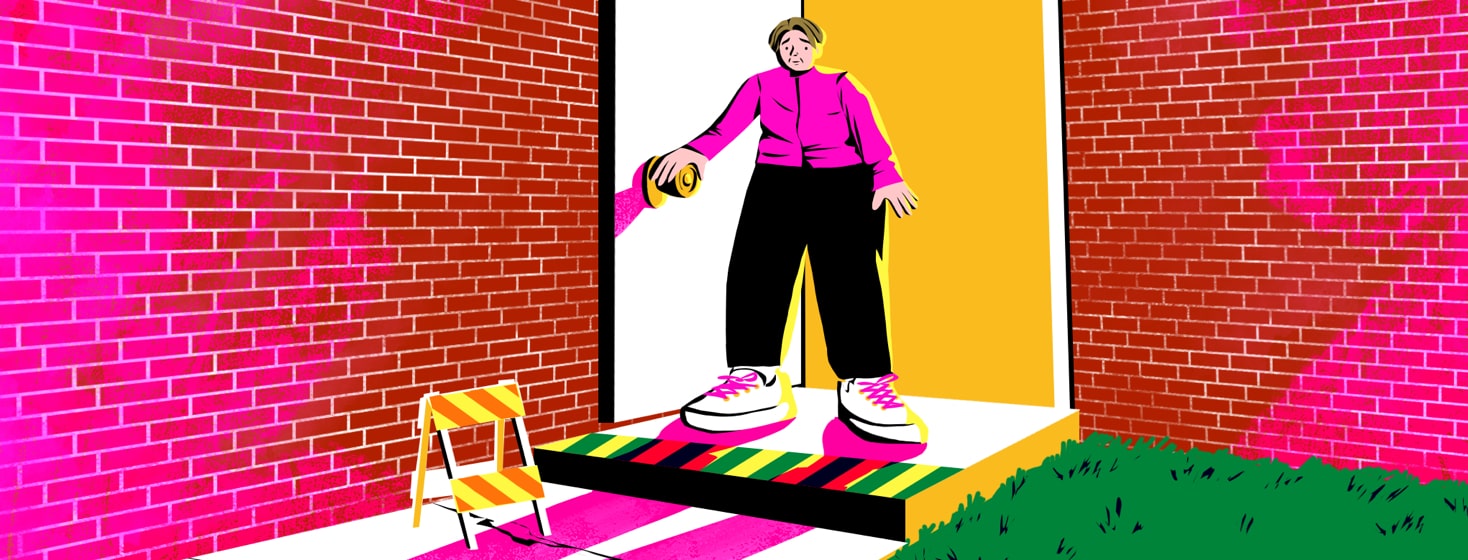Mobility Instability: Balance and RA
Thanks to the volatility of RA joints, balance issues are a sad reality of the disease. It only makes sense that if our joints are swollen, painful, and/or compromised in any way, it will lead to some mobility instability. In addition, as we age, good balance becomes more difficult to maintain.
Falling is physically and mentally scary
If you have ever fallen due to a lack of balance, you know how jarring it is, both mentally and physically. The fall itself is painful enough. Add to that the new and profound uncertainty that a fall causes, and it can be overwhelming.
I worked with an older adult population for 25 years, and one of the most difficult issues they face is establishing enough confidence in their balance to lead an enjoyable and satisfying life. Time and again, I would meet someone who rarely ventured beyond the 4 walls of their home or even out of their favorite chair. When asked why, they would eventually share that their fear of falling overcame any other desire. It was often because they had fallen and suffered physical injury and now have an overpowering sense of fear that it will happen again. These days, programs to assist with balance are abundant, and people should take advantage of them.
RA can lead to instability issues
I began to see that having RA brings many of those same balance issues that I saw with our clients. Those with RA often feel unstable as we walk and off-balanced as we go about our daily lives. This can trigger the same types of reactions I saw in the folks I worked with, i.e., fear of leaving our homes and not being able to function, even within our homes, with any degree of mobility confidence.
Tips to improve balance
That has led to me exploring ways to counterbalance problems.
Work with a physical therapist
One suggestion is to check in with your care team and let them know you have some concerns about balance and instability. I did that and it led to me working with a physical therapist who provided some terrific and extremely helpful exercises and practical daily life suggestions. Things as simple as walking, which we all take for granted, need to be adjusted to offset balance problems. I often tended to look down at my feet when I walked on an uneven or unfamiliar surface. It turns out that is not wise. You need to keep your head up, looking ahead to maintain balance. That is just one example. It is also important to how you space your feet and where you place them as you take steps.
Do exercises that help improve balance
Another suggestion is to take up any form of exercise that promotes improved balance. Tai Chi is one of those. It is an evidence-based falls prevention practice. I have been practicing Tai Chi for over a decade now and have been a certified teacher for nearly as long. One of the most important lessons I share with my students is to “Go Small, Don’t Fall.” What this means is to take smaller, more compact steps. Move just a bit slower and more deliberately. I must admit that the slow-down part was a big challenge for me. Truth be told, it still is. But, doing Tai Chi, which involves slow, deliberate movements, has helped me in that department. It is also great for RA in other areas such as flexibility, strength, and the meditative value it offers.
There are numerous strategies available to you when it comes to coping with the reality of mobility instability. Take the time to explore them, as they could change your life for the better!
Nan

Join the conversation